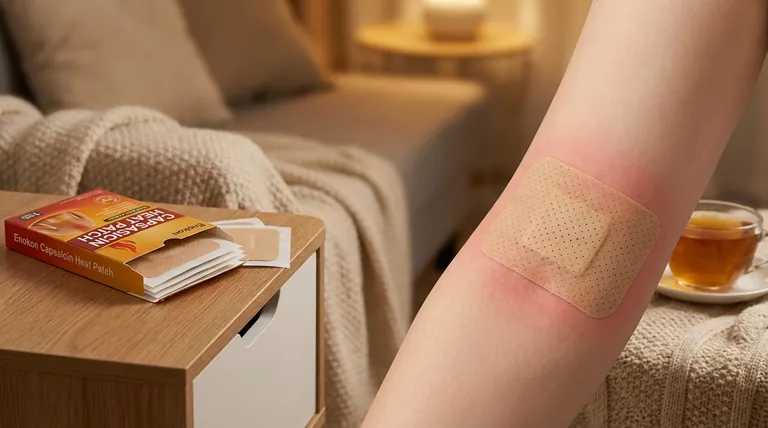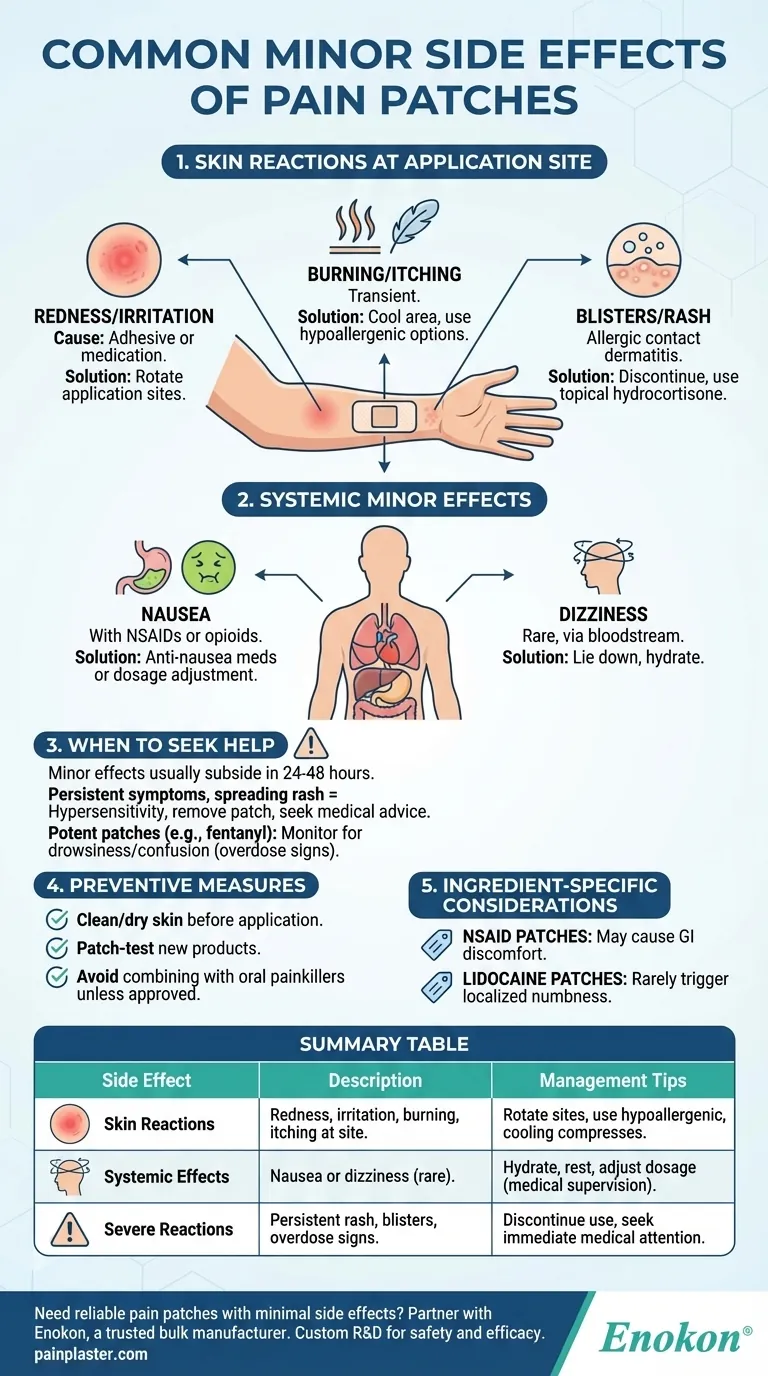Pain patches are widely used for localized pain relief, but like any medication, they can cause minor side effects. These typically involve skin reactions at the application site, such as irritation, redness, or mild burning sensations, which often resolve on their own. Less common systemic effects like nausea may also occur. While most side effects are temporary, understanding their nature helps users distinguish between typical reactions and rare but serious complications requiring medical intervention.

Key Points Explained:
-
Skin Reactions at Application Site
- Redness/Irritation: The most frequent side effect, caused by adhesive components or medication absorption. Rotating application sites minimizes recurrence.
- Burning/Itching: Often transient; cooling the area or using hypoallergenic alternatives (e.g., silicone-based adhesives) may help.
- Blisters/Rash: Indicates mild allergic contact dermatitis. Discontinuing use and applying topical hydrocortisone usually resolves it.
-
Systemic Minor Effects
- Nausea: Occurs with patches containing NSAIDs or opioids due to systemic absorption. Taking anti-nausea medication or adjusting patch dosage may alleviate this.
- Dizziness: Rare with topical formulations but possible if medication enters the bloodstream. Lying down and hydrating can mitigate symptoms.
-
When to Seek Help
- Minor effects should subside within 24–48 hours. Persistent symptoms or spreading rashes suggest hypersensitivity, requiring patch removal and medical advice.
- For pain patches with potent ingredients (e.g., fentanyl), monitor for atypical drowsiness or confusion, which could indicate overdose.
-
Preventive Measures
- Clean/dry skin before application to enhance adhesion and reduce irritation.
- Patch-test new products on a small area to check for allergies.
- Avoid combining with oral painkillers unless approved by a doctor to prevent drug interactions.
-
Ingredient-Specific Considerations
- NSAID Patches: May cause gastrointestinal discomfort if overused.
- Lidocaine Patches: Rarely trigger localized numbness beyond the target area.
By recognizing these patterns, users can safely manage minor side effects while staying alert to red flags. Always review the patch’s active ingredients and consult healthcare providers for personalized guidance.
Summary Table:
| Side Effect | Description | Management Tips |
|---|---|---|
| Skin Reactions | Redness, irritation, burning, or itching at the application site. | Rotate application sites, use hypoallergenic adhesives, or apply cooling compresses. |
| Systemic Effects | Nausea or dizziness (rare with topical formulations). | Hydrate, rest, or adjust dosage under medical supervision. |
| Severe Reactions | Persistent rash, blisters, or signs of overdose (e.g., confusion, drowsiness). | Discontinue use and seek immediate medical attention. |
Need reliable pain patches with minimal side effects? Partner with Enokon, a trusted bulk manufacturer of transdermal patches and pain plasters for healthcare distributors and brands. Our expertise in custom R&D ensures formulations that prioritize safety and efficacy. Contact us today to discuss tailored solutions for your needs!
Visual Guide

Related Products
- Capsaicin Chili Medicated Pain Relief Patches
- Far Infrared Deep Heat Relief Patches Medicated Pain Relief Patches
- Heating Pain Relief Patches for Menstrual Cramps
- Menthol Gel Pain Relief Patch
- Icy Hot Menthol Medicine Pain Relief Patch
People Also Ask
- Are pain relief patches safe for sensitive skin? Your Guide to Safe Use & Skin Testing
- Can pregnant women use pain relief patches? Your Essential Guide to Safe Pain Management
- What is the purpose of capsaicin patches? A Guide to Temporary Pain Relief
- Can the pain relief patch be used with other external analgesic products? A Critical Safety Guide
- What precautions should be taken with buprenorphine patches? Ensure Safe Use and Avoid Overdose Risks















